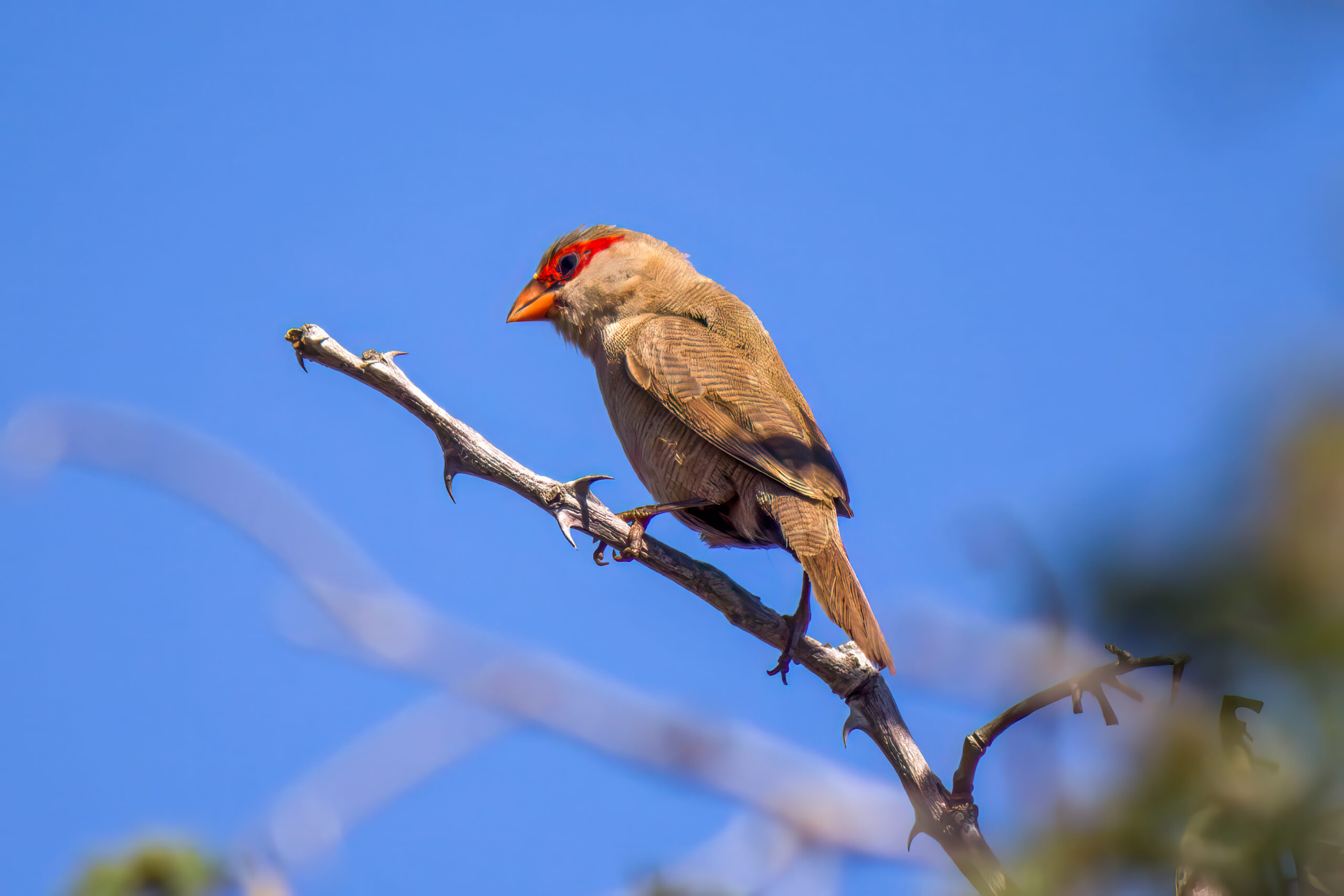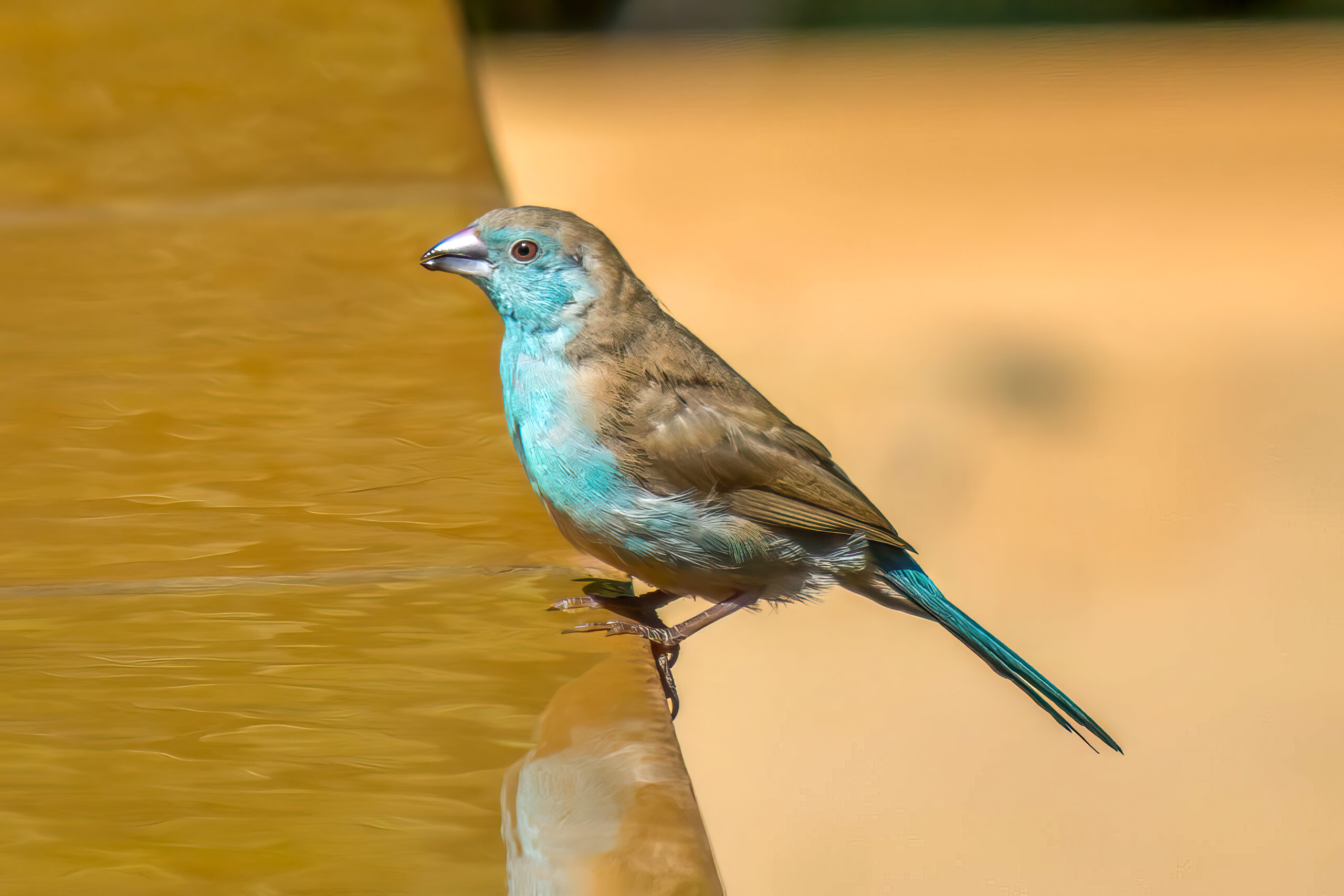Long-tailed Paradise Whydah
(Vidua paradisaea)
Description
The long-tailed paradise whydah (Vidua paradisaea), also known as eastern paradise whydah, is a striking bird known for its remarkable long tail feathers and vivid plumage. It is found in eastern and southern sub-Saharan Africa, from Ethiopia to South Africa, and west to Angola. Adult males in breeding condition exhibit an impressive long tail, a mostly black plumage with a yellow neck, red chest and light yellow to white belly. Females and non-breeding males look similar. They have short tails and a less spectacular plumage, which is mostly tawny speckled with black markings on back and wings. Head is lighter in coloration, with black stripes. They typically measure about 12-13 cm (4.7-5.1 in) in body length, with the male’s tail extending up to 36 cm (14 in) during the breeding season.
Diet & habitat
Long-tailed paradise whydahs thrive in savannas, grasslands, and lightly wooded areas, often near water sources. Their diet mainly consists of seeds, particularly those of grasses, which they forage for on the ground. During the breeding season, they may also consume insects. Their feeding strategy involves both ground foraging and picking seeds directly from grass stems.
Nesting
The breeding season of the long-tailed paradise whydah is closely tied to the rainy season, which varies across different regions. During the breeding season, the males exhibit a dramatic change in appearance with their extended tail feathers, which they use in elaborate courtship displays. These birds are brood parasites, meaning they do not build their own nests. Instead, they lay eggs in the nests of other bird species, particularly waxbills. The female whydah subtly lays her eggs in the host’s nest, and her chicks are raised by the unsuspecting foster parents. Unlike the parasitic cuckoos, who are also brood parasites, the eggs of the host is not destroyed in this process. The incubation period and time to fledging depend on the host species but generally align with those of the host’s own chicks.
The long-tailed paradise whydah has not only evolved eggs that look similar to the eggs of the host species, but the chicks also have the same vocalizations as the hosts’ chicks. Additionally, the male paradise whydah learns the song of the host species and uses it as his own song when attracting females during the breeding season. This shows there is a close relationship between the host species and the behavior of the long-tailed paradise whydah.
Status
The long-tailed paradise whydah has a wide range and the population is believed to be stable. lt is listed as least concern on the IUCN Red List.







